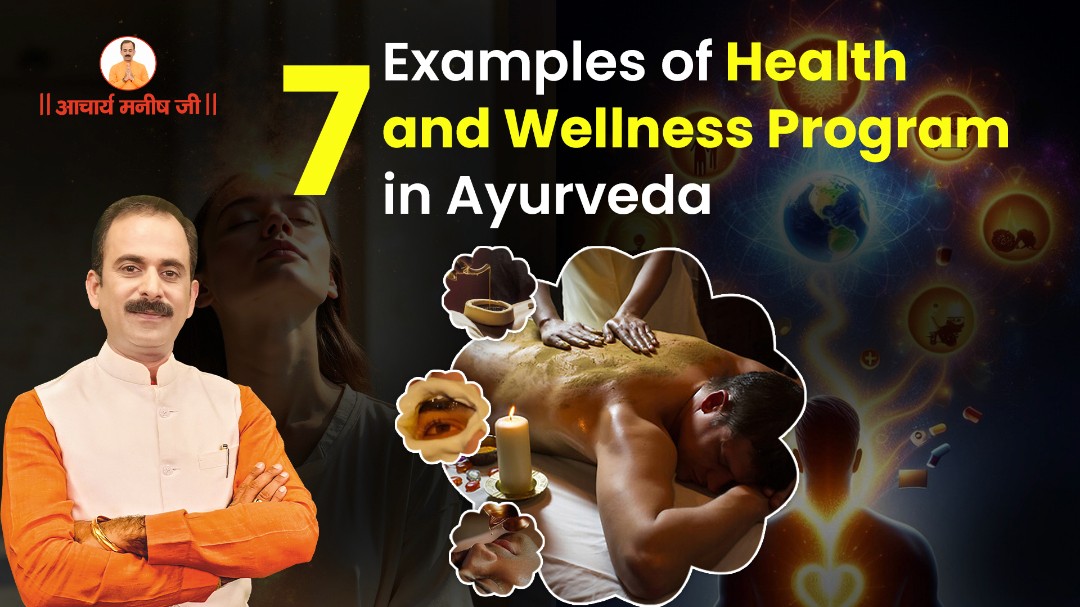Natural Joint Pain Treatment in Ayurveda: Expert Guidance by Acharya Manish Ji
Ayurveda offers a time-tested alternative that goes beyond symptom relief and targets the root cause of chronic joint discomfort. Inspired by the ancient healing system and the guidance of Acharya Manish Ji, this approach combines plant-based remedies, lifestyle modifications, and personalized therapies that restore internal balance—especially by soothing the Vata dosha, the primary culprit behind joint pain in Ayurvedic understanding.
At HiiMS wellness clinics, thousands have experienced lasting relief from joint pain—without heavy medications or surgeries—through natural, Ayurvedic joint treatments.
Why Modern Treatments Often Fall Short
While modern medicine offers quick fixes like painkillers and steroid injections, these solutions are often temporary. Over time, they may bring harmful side effects: liver strain, stomach issues, and dependency.
In contrast, Ayurvedic joint pain treatment focuses on long-term healing by correcting imbalances in the body—especially the disturbed Vata energy. Rather than suppressing symptoms, Ayurveda promotes natural joint lubrication, digestion, and detoxification to revitalize your body from within.
Real Transformation: From 7 Surgeries to Healing Naturally
Rammer Singh Malik suffered for over 7 years with recurring painful lumps that even 7 surgeries couldn’t resolve. Despite spending over ₹20 lakhs on treatment, his condition kept returning—worse every time—with no lifestyle or dietary guidance offered.
Frustrated, he turned to Ayurveda and self-healing, using a combination of aloe vera, warm water, lime (chuna), and snake plant paste. In just 3 months, the lump disappeared without surgery.
Later, he visited HiiMS for deeper healing. On arrival, he could barely walk or bend. But after just 8 days of Panchakarma therapy, Mr. Malik showed incredible recovery—able to bend, walk freely, and even do full sit-ups in front of the staff and patients. His story is a powerful testimony to the transformative power of Ayurvedic care.
Top Ayurvedic Remedies for Joint Pain at HiiMS
1. Janu Basti – Targeted Healing for Knee Joints
A therapeutic ring made of black gram dough is placed around the knee and filled with warm, herbal oil. This oil deeply penetrates to relieve pain and stiffness.
Benefits:
Reduces swelling and inflammation
Deeply lubricates joints
Restores knee strength and flexibility
2. Janu Pichu – Gentle Oil Therapy for Nourishment
A soft, sterile cotton pad soaked in warm medicated oil is placed on the knee to rejuvenate joint tissues.
Benefits:
Enhances joint flexibility
Hydrates and nourishes joint tissues
Soothes inflammation and discomfort
3. Janu Dhara – Continuous Oil Therapy for Stiffness Relief
A stream of warm herbal oil is poured over the knees to ease pain and improve blood flow.
Advantages:
Boosts ligament strength
Reduces inflammation naturally
Improves joint mobility
4. Parishesh Therapy – Herbal Oil Massage for Detoxification
Warm, medicated oil is gently massaged into the joints, promoting detoxification and improving joint flexibility.
Benefits:
Improves blood circulation
Removes toxins from the joints
Offers long-term pain relief
Dietary Tips to Balance Vata Dosha (Root Cause of Joint Pain)
Chew every bite 32 times (mouthful the size of your thumbnail)
Avoid cold water with meals
Sip warm water, preferably while squatting
Follow a Vata-pacifying diet including warm, nourishing foods
Why Choose Ayurveda for Joint Pain?
100% natural and non-invasive therapies
Personalized to your body type and condition
No side effects, no dependency
Holistic healing—mind, body, and spirit
Conclusion: Regain Movement. Reclaim Life.
Don’t let arthritis or joint pain dictate your daily routine. HiiMS offers an effective, safe, and natural solution for long-term relief using the healing power of Ayurveda. Through treatments like Janu Basti and Panchakarma, you can move freely again—without surgeries or synthetic drugs.
Heal naturally. Live fully. Choose HiiMS.
FAQs
Q. Which Ayurvedic therapy is best for knee arthritis?
A. Janu Basti is highly recommended for strengthening and relieving knee joints.
Q. Are these treatments painful?
A. Not at all. All therapies at HiiMS are completely natural and non-invasive.
Q. How many sessions are needed?
A. Results vary, but many experience relief after just a few sessions.
Q. Can Ayurveda cure chronic joint pain?
A. Ayurveda helps manage the root cause of joint pain and offers long-term relief.
Q. Is Panchakarma included in the treatment?
A. Yes, Panchakarma is a crucial part of detoxification and healing in joint care.
Patient Success Story: From 7 Surgeries to Natural Healing with Ayurveda at HiiMS
Rammer Singh Malik suffered for more than seven years of horrible suffering and pain due to a recurrent lump. His issue continued to come back even after seven operations and allopathic treatment. The lump grew bigger and hurt more each time it returned. There was no lasting relief even after spending more than ₹20 lakhs. There was no advice on nutrition, lifestyle, or other options from the doctors. It was always medication or surgery.
Mr. Malik turned to natural and Ayurvedic healing after becoming frustrated with the lack of results. He started using a blend of warm water, aloe vera, lime (chuna), and snake plant paste for self-treatment. Without surgery, the bulge that had bothered him for years went away entirely in three months.
He subsequently went to HiiMS for additional help and healing. He could hardly walk or bend forward when he got there. He showed excellent recovery after just 8 days of Panchakarma treatments. In front of other patients and staff, he was able to bend gently, walk freely, and even perform complete sit-ups.
Acharya Manish invites you to join him on this journey towards holistic wellness. Embrace the ancient wisdom of Ayurveda and Naturopathy, and be a part of a global community committed to natural health and well-being.
Join the Movement
1.5k+ Already Subscribed




